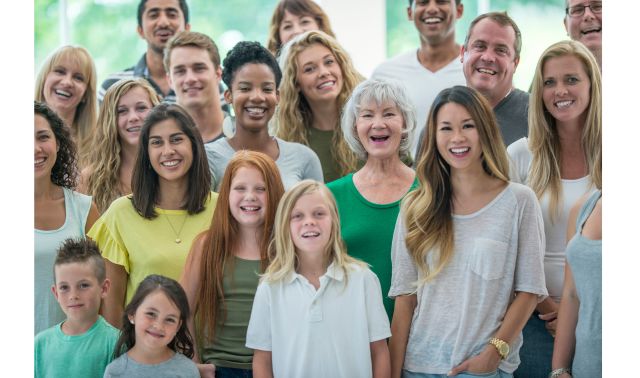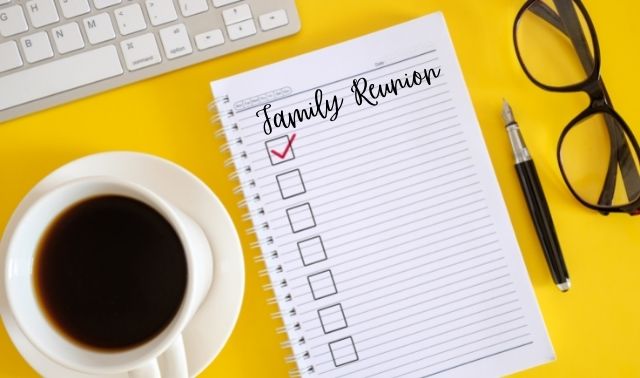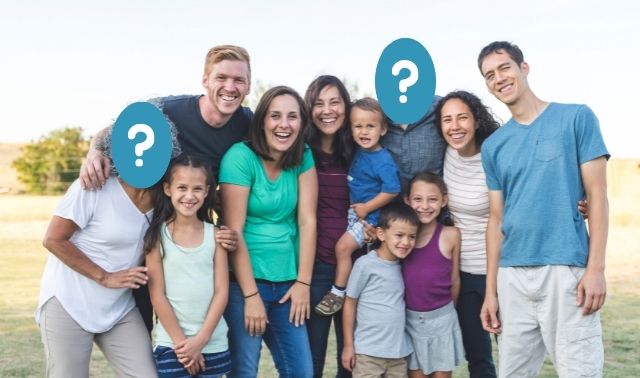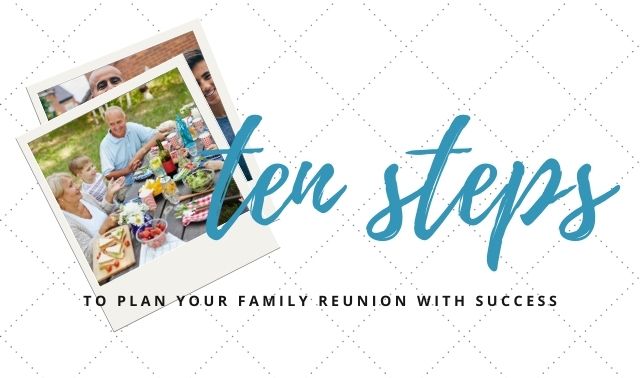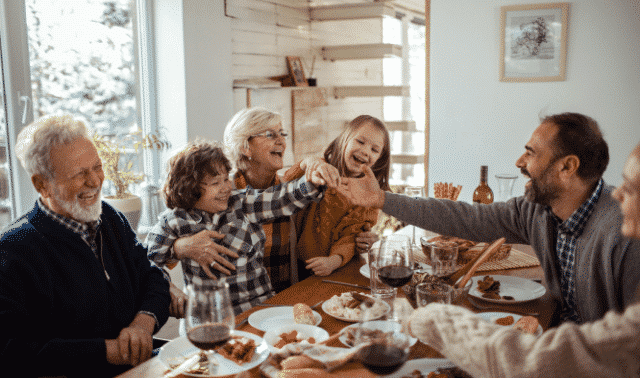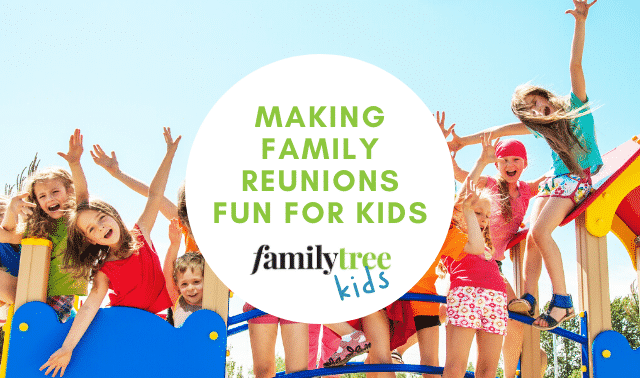Sign up for the Family Tree Newsletter! Plus, you’ll receive our 10 Essential Genealogy Research Forms PDF as a special thank you.
Get Your Free Genealogy Forms
"*" indicates required fields
Family reunions offer more than just a chance to catch up with relatives and share generous meals and small talk. They also provide the perfect opportunity to reminiscence over old memories and create new ones—and even collaborate on genealogy projects.
But to plan a family reunion, you’ll need to do more than make a couple of phone calls and agree to meet at Grandma’s house. You need a clear agenda, unmatched collaboration and, perhaps most important, consistent communication.
The sooner that communication happens, the better. The most common mistake people make when communicating plans for a family reunion “is not starting early and consistently,” says Reunions Magazine Editor Edith Wagner.
This makes sense. How can everyone coming to a reunion be on the same page if they only hear whisperings about a tentative date or location? A reunion that’s hastily planned and sparsely attended may be memorable—but perhaps not for the right reasons.
Fortunately, avoiding reunion disaster can be as simple as establishing clear channels of communication from the start. In this article, we cover several forms of communication you will want to use to ensure a smooth family reunion—from the RSVPs to the goodbyes.
Why Clear Communication Matters
First, let’s look at some reasons you should make a clear and consistent effort to communicate about a reunion ahead of time.
Avoiding Scheduling Conflicts
It’s almost inevitable that someone will have to miss a reunion: sickness, work schedules, last-minute appointments, or family trouble. But nobody wants to be forced to choose between two or more important events.
Communicating early and often with attendees can help you schedule around known conflicts. “Planners must make sure there are no all-family occasions coming up like graduations, weddings, (or) big anniversaries,” says Wagner. Having a reunion at the same time as one of these events would force invitees into tough, uncomfortable decisions, and possibly hinder attendance.
Getting a Head Count
Before booking a venue or planning the menu, you need to know about how many people to expect. Attendance affects how much food you’ll need and what size space can comfortably host the event—and you don’t want too much or too little of either.
Knowing who will be in attendance ahead of time also allows you to add personal touches, like place settings and souvenirs. Having names handy will prevent you from leaving someone out.
Hearing Ideas and Needs
Families have different processes for planning and overseeing reunions. For some, one person may oversee the entire event from start to finish; others may appoint a committee to oversee funds, food, decorations and activities.
Regardless, reunions should reflect the interests and needs of everyone in attendance, at least collectively. For example, a lot of people could miss out on a meal if you spring for an enormous meat-lovers’ barbeque but a good portion of your family is vegetarian. You will also want to ensure that you know how many children are coming and what you can do to keep them entertained. You might offer a craft table where they can decorate their own souvenir mug or even just different games where they can win candy and small toys.
You’ll also want to know about any attendees who will need special accommodations, such as wheelchair ramps or space for medical supplies. Communicating during this stage of reunion-planning can ensure that you meet those needs, as well as any dietary restrictions.
Building Excitement
Family reunions can be more than one day of fun and memories. They foster a sense of togetherness and belonging where every person feels like a vital part of the family. Keeping open communication and encouraging others to share their thoughts and feelings can help create an environment where people want to speak up and take ownership of the event. They also look forward to the big day and spread the news about it!
“The whole point of pre-reunion communications is to build anticipation and excitement,” says Wagner. She points to save-the-date announcements—often sent in the mail as postcards—that encourage invitees to set aside the date.
But effective, prompt communication doesn’t begin and end with slips of paper through the mail. That is where the “consistent” element plays such a major role, often from invitees’ computers and smartphones.
“Use repeated social media and mailings to build anticipation and excitement,” says Wagner. She also recommends using those tools to secure registrations and organize money and volunteers. “Use responses in subsequent communication to demonstrate who’s coming, what they’re contributing, and how excited they are,” she says. “Members will want to see their names on the list and respond more readily.”
3 Tools for Communicating About Reunions
1. Surveys
Before you even set aside a day and create an agenda, gauge interest in a reunion in the first place—that is, see how many people would be interested in attending such an event.
A survey can help. More than just one yes-or-no question about attendance, your survey should ask what invitees would like to see at the family reunion—think special dishes inspired by decades-old family recipes, hands-on activities like family trees and photo collages, and games and prizes.
You might ask an open-ended question about what people would like to do at the event or provide several options for them to choose from. In either case, make sure that you provide some place on the survey for people to share their ideas.
You might also add a couple of questions aimed specifically at the children and teenagers who will be in attendance. For example, you might ask questions like “What are some of your favorite summer activities?” or “What kind of music do you enjoy?” That way, you can create an environment that ensures they have a memorable time, too.
Encourage even non-attendees to fill out the survey, as their responses could give you clues about why they don’t plan to attend. Wagner points out a survey might reveal they simply have a scheduling conflict.
Many tools can help you create a survey. Reunions Magazine’s Reunion Planners Notebook has example surveys, which offer different ways of formatting questions.
One popular tool for creating a digital survey Google Forms. You can send a Google Forms link directly to whomever you want, or post the link in a group chat. Google Forms will track all responses for you, so you can refer back to them whenever you need to.
2. Save-the-Dates and Invitations
Once you’ve collected feedback and have the basic details of your event, the next step is letting your relatives know when and where the reunion will take place. Save-the-dates and invitations are classic ways of getting the word out.
Save-the-dates aren’t official invitations (though you may choose to format them as such). Rather, they contain just enough information to encourage the invitee to put the event on the calendar. Reunions Magazine has examples of save-the-date notices both on its website and Pinterest account. You can also find many free templates online, including these from Adobe.
These notices should be informative as well as eye-catching. Many will keep them somewhere they can regularly be seen, such as on a refrigerator or bulletin board. They’re your chance to get creative and think about what brings the family together! For example, if you belong to a family of theatre fanatics, you might format it to look like a Broadway poster. You could also include images that resonate with the family–for example, a snapshot from your ancestors’ hometown village, your family crest or even just an animal that your family associates itself with.
Traditionally, a dedicated invitation follows the save-the-date. An invitation possibly includes more details concerning the itinerary, including those that had not yet been solidified when the save-the-date was sent. It must also contain instructions for RSVPing (including contact information), as well as details about booking hotel rooms and addresses for such hotels.
Whether to choose both save-the-dates and invitations (and what you include in each) is up to you. The important thing is that you inform attendees about dates and any fees or deadlines.
“Always include the date, reminders (hotel, meal, tour, activity arrangements), cost and deadlines,” advises Wagner. “Often there are sliding deadlines for payment with cost increasing over time or prizes/recognition for early registrations.” She adds that fees often need to be paid in advance rather than at the door.
As with save-the-date notices, you can find many examples of invitations on the Reunions Magazine website. You can also find templates to help you create your own across the web. Pinterest has thousands that you can use for free.
3. Newsletters and Social Media Announcements
Even after you’ve sent out surveys, save-the-dates, and invitations, you still want to keep in digitally touch with attendees about the event. Mass emails or group texts are simple but impersonal options.
A dedicated family reunion newsletter is another. You could publish one at regular intervals before the event—maybe monthly or once every three months leading up to the event. They’re especially valuable for families who have annual reunions, as they can remind people about important dates and address common questions. You can even invite members of the family to contribute photos, articles or other media to bring the newsletter to life. Reunions Magazine provides many examples of newsletters.
Your newsletter can also focus on your family as a whole rather than just your reunion. You can include fun family history trivia, a “hall of fame” of family inside jokes and memorable quotes, family recipes, birth and marriage announcements, and more. We provide our own guide on how to structure a family newsletter, which you can tailor to meet your family’s needs.
That said, a family newsletter isn’t the only way to keep everyone engaged and excited. Maybe you don’t have the resources to start and maintain one, or your family prefers to communicate in others. In those cases, you might turn to social media.
Facebook groups are still popular tools, and can cover all things related to a family reunion. This doesn’t just have to be important dates or travel information either. You can encourage members to share photos from past reunions or potential activity ideas. Even just regular discussions about general topics like favorite movies, books and foods can help strengthen bonds and get people that more excited to meet in person.
The bottom line? There’s not necessarily a right or wrong way to drum up enthusiasm for your family reunion. What’s most important is making sure people know that it’s coming up, that it’ll be a blast, and that everyone will create new memories worth sharing for generations.
Related Reads
Additional Resources
- Reunions Magazine: https://reunionsmag.com/
- Reunions Magazine – Reunion Invites!
- Reunions Magazine – Social Media Index
Last updated: June 2023

